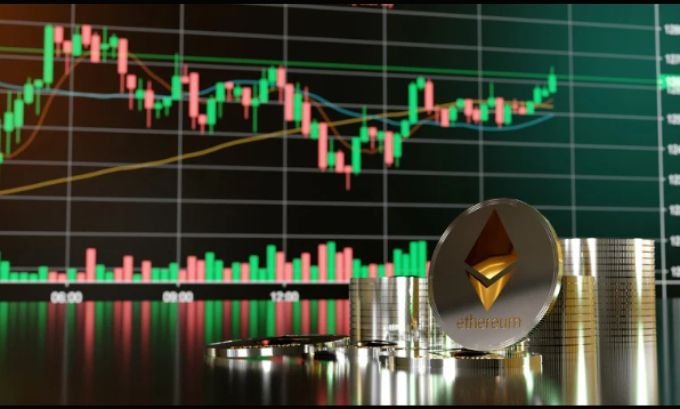Figuring out how to trade crypto for profit can feel like trying to catch lightning in a bottle. It’s a world buzzing with hype, but real success comes from a blend of smart strategy, relentless education, and a healthy dose of discipline. This guide cuts through the noise to give you a realistic roadmap, exploring everything from the foundational tech to the mindset you’ll need to navigate the ups and downs of Cryptocurrency markets.
Table of Contents
A Practical Path to Trading Crypto for Profit
So, you want to learn how to trade crypto for profit? The path starts with a few foundational steps: choose a trusted Cryptocurrency Exchange Platform, secure your account, and get comfortable with the interface. After that, it’s all about learning to read the market, picking a trading style that suits your personality, and executing your plan without letting emotions take the driver’s seat. It’s less about getting rich overnight and more about making consistently smart decisions with assets like Bitcoin (BTC) and Ethereum (ETH).

First, Understand the Playing Field
Jumping into trading without knowing the basics is a recipe for disaster. Let’s cover the two most important concepts you need to grasp before you even think about placing a trade.
What Exactly is Cryptocurrency?
Think of Cryptocurrency as digital money, but with a twist. It’s secured with powerful encryption, which makes it incredibly difficult to counterfeit. Unlike the dollars in your bank account, which are controlled by a central government, most cryptocurrencies run on a decentralized network using Blockchain technology. This means no single person or bank controls it. The most famous players are Bitcoin (BTC), the original crypto, and Ethereum (ETH), which expanded the possibilities with something called smart contracts.
Why Blockchain Matters
Blockchain is the engine that makes it all work. Imagine a digital receipt book that’s shared across thousands of computers. Every transaction is a “block” that gets added to a “chain.” Once a block is added, it’s permanent and can’t be secretly altered. This creates a transparent and secure system for moving value. This breakthrough is a massive part of the Financial Technology (Fintech) movement, as it allows people to transact directly with each other, cutting out the middlemen.
If you want to explore more insights on how to trade crypto for profit, feel free to check out these detailed articles techbullion.in, Ponta.in, mindjournal.co or mumbaitimes.net
A Trader’s Journey: My First Steps and Hard Lessons
When I first dipped my toes into Cryptocurrency Trading, the feeling was a potent mix of pure excitement and sheer terror. I started with a simple rule that I still live by: only invest what you can afford to watch disappear. Here’s a transparent look at how I got started and the lessons that shaped my approach.
My first real decision was picking a home base—a Cryptocurrency Exchange Platform. I spent days comparing Coinbase, Gemini, and Kraken, weighing their fees, security reputations, and how easy they were to use. I landed on one that felt right for a beginner but still had the tools I knew I’d need later. Setting up the account involved verifying my identity, which felt like a necessary and reassuring step.
From there, I built a routine. It wasn’t glamorous, but it was my anchor in the volatile crypto seas.
- Morning Intel (Around 9:30 AM): Before the day got chaotic, I’d check the charts. I’d look at the bigger picture for Bitcoin (BTC) and Ethereum (ETH) to understand the overall market mood. Was it bullish, bearish, or just going nowhere?
- Finding My Strategy: I didn’t try to master everything at once. I focused on one specific pattern: “fair value gaps.” These are little pockets in the price chart where the market moved so fast it left an imbalance. The theory is that price often revisits these areas. My plan was to look for entry points there.
- The Trading Journal: This was my secret weapon. I risked a set amount on each trade—say, $500. Win or lose, every single trade went into a journal. I noted the setup, why I took the trade, how it played out, and—most importantly—how I felt. It didn’t take long to see patterns, like my tendency to exit winning trades too early out of fear. This journal was my coach.
I’ll never forget one grueling trade on Solana (SOL). The market was in a nosedive, but I saw a setup for a potential bounce. I entered a “long” position, betting the price would go up. Then… nothing. For hours, the price just moved sideways, teasing my stop-loss. It was a mental battle. The old me would have panic-sold. Instead, I trusted my plan and moved my stop-loss to my entry point, ensuring I wouldn’t lose money. The trade closed for a tiny profit, but it felt like a huge victory for my discipline. That day, I learned that successful trading is less about hitting home runs and more about not striking out.

The Bright Side: What Makes Crypto Trading Appealing
After spending years in the trenches, I can tell you the appeal of crypto trading is about more than just the money. Here are some of the standout strengths.
- A Market That Never Sleeps: Unlike the 9-to-5 stock market, crypto trades 24/7. This flexibility is incredible, letting you trade when it works for you, not the other way around.
- The Potential for Rapid Growth: Let’s be honest—the volatility is a huge draw. While it carries risk, the speed at which prices can move creates opportunities for significant profit that are rare in traditional markets.
- You’re in the Driver’s Seat: Thanks to Blockchain, you’re not just a number in a bank’s ledger. The decentralized nature of Cryptocurrency gives you more direct control over your assets.
- Easier Access Than Ever Before: Getting started is surprisingly simple. Modern Cryptocurrency Exchange Platforms are designed for beginners, and there’s a wealth of information available to help you learn the ropes.
- Riding the Wave of Innovation: This isn’t just trading; it’s participating in the future of Financial Technology (Fintech). You gain practical knowledge about a technology that is fundamentally changing our world.

The Harsh Realities: What to Watch Out For
It’s not all sunshine and Lambos. Anyone who tells you otherwise is selling something. Here are the challenges you will face.
- Volatility Cuts Both Ways: The same force that can generate quick profits can also lead to devastating losses. A single tweet or news event can send prices tumbling. Without a solid risk management plan, you can lose your capital fast.
- The Wild West of Regulation: Governments are still trying to figure out the rules for crypto. An unexpected policy change can shake the entire market, creating an unpredictable environment for traders.
- Security is Your Job: While Blockchain is secure, the platforms and wallets you use are targets. Hackers and scammers are always looking for an easy mark. Using two-factor authentication and considering a hardware wallet aren’t just suggestions; they’re necessities.
- The Battle Against Your Own Brain: Fear and greed are the twin demons of every trader. Watching the market swing can trigger a fight-or-flight response, leading to impulsive decisions you’ll later regret. Discipline is the only cure.
Looking to spend your crypto gains wisely? Explore authentic Japanese snacks, groceries, and gifts at TokyoMart.store — Japan’s favorite online destination for food lovers.
Finding Your Style: A Comparison of Trading Approaches
There’s no one-size-fits-all strategy for Cryptocurrency Trading. Your personality, schedule, and risk appetite will determine the best fit. Here’s a simple breakdown.
| Trading Style | Typical Holding Time | Personality Fit | Key Focus |
|---|---|---|---|
| Day Trading | Minutes to Hours | Action-oriented, can handle stress | Capitalizing on small, intra-day price moves. Requires constant focus. |
| Swing Trading | Days to Weeks | Patient, strategic thinker | Capturing larger market “swings” over several days. Less screen time required. |
| Position Trading | Months to Years | Long-term believer, macro-focused | Riding major, long-term trends based on fundamental beliefs about an asset. |
| Scalping | Seconds to Minutes | Extremely disciplined, loves data | Executing a high volume of trades for minuscule profits. Not for the faint of heart. |
From Novice to Pro: The Power of Education
If you want to move beyond just guessing, you have to invest in your education. Building true expertise is how you gain the confidence to trade effectively and establish trustworthiness.
For a deep, foundational understanding, academic programs are a fantastic resource. The University of Michigan, for example, offers a specialization in Financial Technology (Fintech) through Coursera. This program gives you a university-level perspective on everything from Blockchain to modern portfolio theory.
If you’re looking for credentials to prove your skills, professional certifications are the way to go.
- The Cryptocurrency Certification Consortium (C4) provides respected, vendor-neutral certifications. Their Certified Bitcoin Professional (CBP) and Certified Ethereum Professional (CEP) are like foundational degrees in the crypto world.
- For traders who want to specialize, the Blockchain Council’s Certified Cryptocurrency Trader™ (CCT) is a top-tier option. It’s an advanced certification designed to validate your expertise in trading strategies and risk analysis.
Pursuing these paths isn’t just about adding a line to your resume. It’s about building the deep, verifiable knowledge that separates serious traders from hobbyists.
Frequently Asked Questions (FAQ)
1. How much do I realistically need to start trading crypto?
You can start with a very small amount, like $50 or $100. The important thing isn’t the amount but the mindset. Start with “learning money”—an amount you’re fully prepared to lose in exchange for valuable experience.
2. Is there a “best” crypto to trade for profit?
Not really. Profit comes from your strategy, not a “magic” coin. Bitcoin (BTC) and Ethereum (ETH) offer high liquidity, which is great for beginners. However, some experienced traders find better opportunities in smaller, more volatile altcoins.
3. What’s the difference between crypto trading and investing?
It’s all about your time horizon. Cryptocurrency Trading is active and short-term, aiming to profit from price movements. Investing is passive and long-term, based on a belief in the fundamental value of the asset.
4. Can I succeed without knowing technical analysis?
It’s highly unlikely. Trading without understanding charts and patterns is like trying to navigate the ocean without a compass. Technical analysis is the language of the market; learning it is essential.
5. What is the single biggest risk in crypto trading?
Beyond market volatility, the biggest risk is you. Emotional decision-making—letting fear or greed dictate your trades—is the fastest way to lose money. A trading plan is your best defense against your own worst instincts.
6. How do I pick a safe cryptocurrency exchange?
Prioritize security and reputation. Look for Cryptocurrency Exchange Platforms that have been around for a while, are transparent about their security measures, and have good user reviews. Low fees are nice, but security is non-negotiable.
7. Is a certification like the CCT necessary to trade?
Absolutely not. You don’t need any formal qualifications to trade for yourself. However, if you want to build a career in Fintech or as a professional trader, certifications like the Certified Cryptocurrency Trader™ (CCT) provide credibility and prove your expertise.
Final Thoughts
Learning how to trade crypto for profit is an marathon, not a sprint. It requires a commitment to understanding the technology, developing a sound strategy, and, most importantly, mastering your own psychology. By embracing a mindset of continuous learning—whether through formal programs at places like the University of Michigan or by earning professional certifications—you can build a solid foundation for navigating this dynamic and rewarding market.
Start with curiosity, proceed with caution, and always prioritize your education. The most valuable asset you have in this market is your knowledge.
Author Bio
This guide was written by a team of Financial Technology (Fintech) enthusiasts and active traders. Our lead author holds the Certified Cryptocurrency Trader™ (CCT) designation and has over eight years of hands-on experience navigating the crypto markets. He is passionate about demystifying Cryptocurrency Trading and promoting a disciplined, education-first approach.
References
- University of Michigan. (2025). Financial Technology (Fintech) Innovations Specialization. Coursera.
- Cryptocurrency Certification Consortium (C4). (2025). Official Certification Programs.
- Blockchain Council. (2025). Certified Cryptocurrency Trader™ (CCT).
- TradingView. (2025). Financial Visualization Platform.




